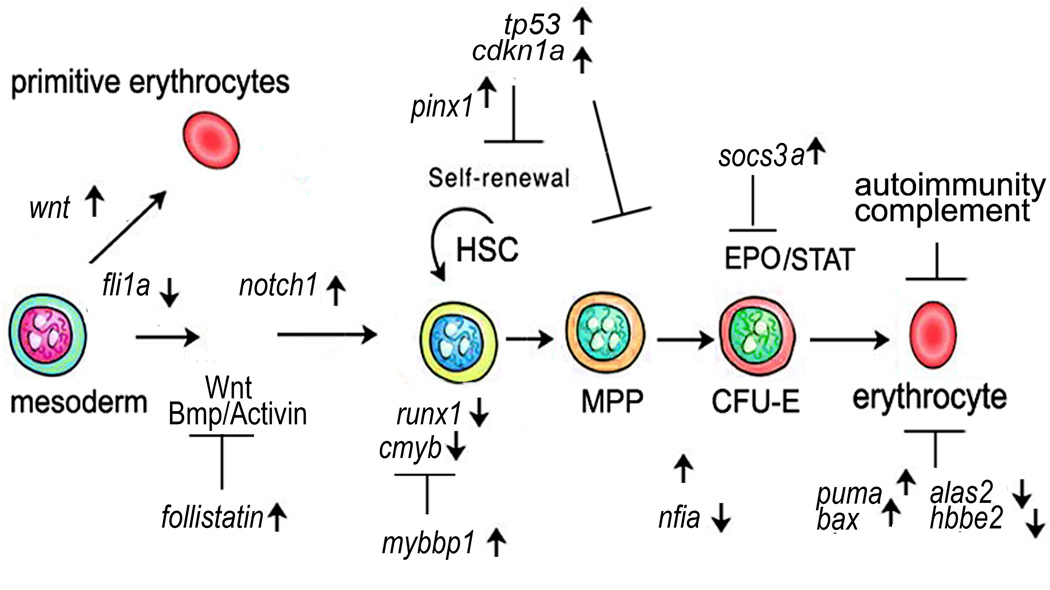Fig 7.
Development and function of red blood cells may be compromised in multiple ways in the rpl11 mutant. Several factors that are important for the development of HSCs such as runx1 and cmyb are downregulated in the rpl11 mutant. Self-renewal of HSCs may be compromised by upregulation of factors responsible for cell cycle arrest such as cdkn1a (p21). Upregulation of cdkn1a may also negatively affect proliferation of erythroblasts. Suppression of EPO/STAT signaling by socs3a may also contribute to decreased proliferation of erythroid progenitors. The function of mature erythroid cells may be compromised in a number of ways. They include increased expression of pro-apoptotic genes, decreased haem production (Alas2 enzyme), dysregulation of haemoglobin synthesis, decreased glycolysis, decrease of enzymes detoxifying ROS, defects in cytoskeleton and membranes. Defective red blood cells would be a subject for enhanced trapping and removal by immune cells.

